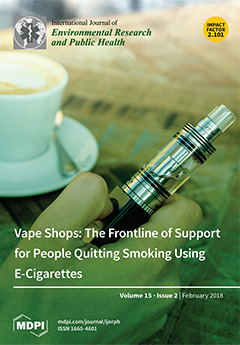Despite its small size, a moss bag can reveal the different temporal and spatial deposition patterns of pollutants at a particular site; therefore, researchers can use moss bags to determine pollution sources and to put forward strategies for pollution control. Although the use
[...] Read more.
Despite its small size, a moss bag can reveal the different temporal and spatial deposition patterns of pollutants at a particular site; therefore, researchers can use moss bags to determine pollution sources and to put forward strategies for pollution control. Although the use of moss bags to monitor atmospheric pollution has been widely reported in Europe, there are few such empirical studies in China. Thus, in this study, bags containing the moss
Sphagnum junghuhnianum were used to assess the concentrations of heavy metals (chromium (Cr), copper (Cu), lead (Pb), vanadium (V), and zinc (Zn)) at five sampling sites (four roads and a forest park) during the summer and winter of 2012. According to the relative accumulation factor (RAF) and contamination factor (CF) results, pollution in winter was heavier than that in summer, and Cr was found to be the most contaminating, having the highest mean CF. There was a significant positive correlation (
p < 0.05) between traffic volume and concentration for three heavy metals (Cr, Cu, and V) in winter, whereas a significant positive correlation (
p < 0.05) was observed between traffic volume and concentrations for four heavy metal elements (Cr, Pb, V, and Zn) in summer, indicating a close relationship between heavy metal contents and traffic volume. Although there was substantial variation in the concentrations of the five heavy metals in the moss bags, significant correlations between heavy metals suggested that the contaminants originated from a common source, namely vehicle emissions. The results demonstrated that the four roads were subject to different degrees of pollution depending on the volume of traffic using each road. Therefore, the results of this study suggest that traffic volume is a major reason for heavy metal pollution.
Full article





